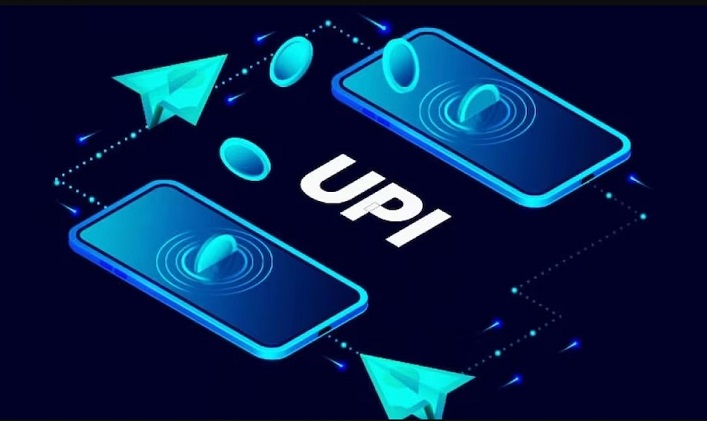The manner in which India pays has transformed a lot of cashless existence to wallet transactions, the UPI and digital wallets have revolutionized modern-day consumer behavior, enhanced financial inclusion, and made instant payments a reality in the daily life of millions.
The Birth and Growth of UPI
UPI was launched in 2016 by the National Payments Corporation of India (NPCI) and they are working to make money transfer easy by combining multiple bank accounts onto a single-platform. What is innovative is the interoperability: With a UPI ID, users can either send or receive funds virtually right now no matter which bank they use.
This system rapidly became popular because it was easy to use. In contrast to the older digital mechanisms that involved use of net banking passwords or card details, UPI needed only a simple PIN. Add on top of that zero merchant fees in the initial funnel and the adoption of the smart phone across India, and usage grew exponentially.
By 2023, UPI had performed over 74 billion transactions that were worth more than 125 trillion rupees, establishing itself as a pillar of a digital economy in India. It was also in tandem with the government efforts such as Digital India that aimed at driving financial inclusion further to rural and semi-urban customers. For readers curious about comparative adoption in other sectors, this website provides insights on how digital innovation intersects with lifestyle and entertainment.
Digital Wallets and Everyday Transactions
Whereas UPI became a pillar of instant transfers, the digital wallets, such as Paytm, PhonePe, and Google Pay, transformed the way people use money in their everyday life. Wallets enabled people to save money, which meant that small purchases would not be so tedious and time-consuming. The QR code appeared in tea stalls, metro stations, and various small shops and was as ubiquitous as cash registers.
The combination of the wallets with UPI has fuzzy boundaries between direct banking and stored value. Customers would be able to utilize wallets not just in peer-to-peer-transactions, but also to make bill payments, to purchase tickets as well as to shop online. This made a situation whereby financial activity is established into the lifestyle habits as compared to viewing it as a differentiated, formal process.
The most important difference between digital wallets and bank-based systems is accessibility. They will serve customers who are not heavy users of banks and are well versed in local languages and provide customer care services best suited to first-time digital adopters. This accommodative nature has seen their popularity among students, small business owners and households.
Financial Inclusion and the Indian Consumer
UPI and digital wallets have reshaped access to financial services in a country where large sections of the population historically operated outside formal banking. Rural India, often overlooked by traditional institutions, saw an opportunity to leapfrog directly into digital finance. With UPI requiring only a smartphone and a linked bank account, barriers were lowered significantly.
For small vendors, the benefits were immediate. Accepting QR code payments reduced the need to handle cash, minimized theft risks, and made accounting simpler. Consumers benefited from cashback schemes, discounts, and reward points, which encouraged early adoption and loyalty. Over time, these incentives created habits that stuck.
India’s youth became a driving force. With mobile-first behavior and growing exposure to global trends, young consumers normalized the idea of digital money. Today, many urban Indians barely carry cash, relying almost entirely on mobile-based payments for everyday needs, from groceries to cabs.
The digital wallet revolution has, in effect, redefined how trust in money operates.
The Road Ahead: Challenges and Opportunities
Although it has succeeded, there are still challenges. Security issues, fraud, and scam have increased with the adoption. Creating awareness about safe habits, like not sharing PIN, or scanning untested QR code, is an essential task. Penetration of the internet is the other problem. Although India has more than 800 million active internet users, the rural connectivity is not very consistent and this is what provides a barrier to UPI universal access.
Regulation systems are also transforming The Indian Reserve Bank (RBI) has adopted some measures in ensuring security and restricting rates charged by the financial institutions and treating the competitive players in the market fairly. The balance of innovation and supervision will also be critical in the future as a higher number of actors may be engaged in the fintech space.
Possibilities are however enormous. Intercountry UPI-based pilots are also launched and used in sending remittance across intercountry borders and travelling overseas. The introduction of artificial intelligence could also generate personal feelings by making guesses about what the customer would like to spend or giving them financial advice. Under the adoption model, UPI and wallets will play a key role on payments not just in India but also internationally, and spill over to other financial systems.
Conclusion
UPI and digital wallets are more than an advance in technology, it is a testament to changing culture of how Indians are viewing and utilizing money. Instant mobile payments have become routine: in villages there are chai stalls, in metros there are multiplexes.
This revolution has opened up millions of people to the financial mainstream,, has given birth to and encouraged entrepreneurship and has created trust on digital ecosystems. Issues of security, adequate infrastructure and regulations still loom, but the direction is inexorable: India is on its way to a cashlight economy where confidence in all things digital has replaced affinity with paper.
India is today positioned as one of the cases of scale and adoption in the global fintech world. The real power of UPI and digital wallets is that simple, inclusive, and innovative technology transforms how an entire nation can transact and flourish.

